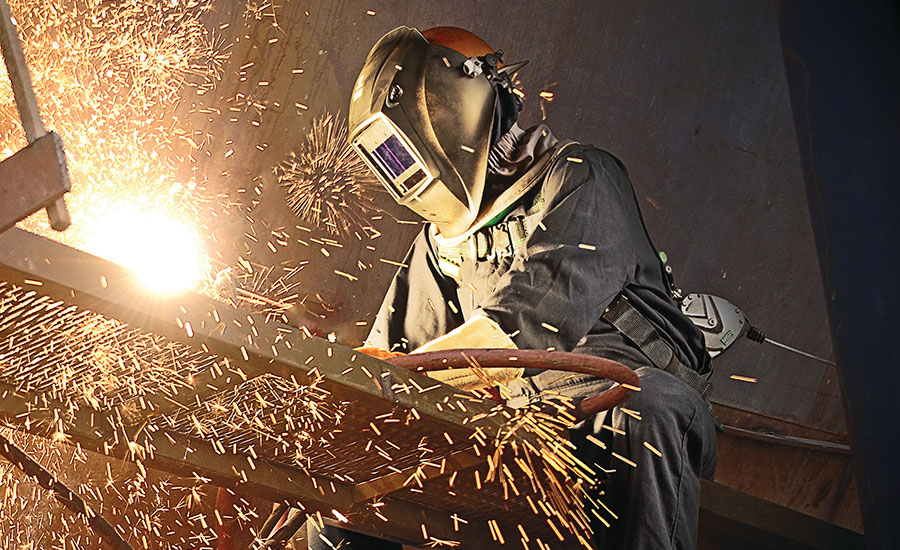The Value of Welding WPS: Guaranteeing Quality and Safety in Your Tasks
The Value of Welding WPS: Guaranteeing Quality and Safety in Your Tasks
Blog Article
The Ultimate Overview to Welding WPS Procedures: An Extensive Review for Welders
In the intricate world of welding, Welding Treatment Requirements (WPS) work as the foundation of guaranteeing high quality, uniformity, and safety and security in welding operations. Understanding the nuances of developing, implementing, and monitoring WPS treatments is crucial for welders seeking to boost their craft and fulfill sector criteria. As we explore the numerous elements of a WPS and explore the intricacies of certification and accreditation, we will uncover the vital function these treatments play in the world of welding. Allow's start a journey to untangle the intricacies and relevance of WPS procedures in welding techniques.
Importance of WPS Procedures
Understanding the significance of Welding Treatment Specs (WPS) procedures is essential for guaranteeing the quality and integrity of welded structures. WPS treatments serve as a roadmap for welders, detailing the required steps, criteria, and products needed to achieve an audio weld. By adhering to WPS guidelines, welders can make certain uniformity in their work, resulting in structurally sound and trustworthy welds.
Among the primary reasons that WPS treatments are crucial is their function in preserving weld top quality and honesty. Complying with the specified welding parameters and techniques laid out in the WPS assists avoid problems such as porosity, cracking, or incomplete blend, which can endanger the stamina and resilience of the weld. Additionally, WPS treatments are essential for making certain compliance with sector standards and codes. By complying with established WPS standards, welders can show that their work fulfills the required demands for safety and high quality, supplying guarantee to clients, assessors, and regulatory bodies. Fundamentally, the value of WPS treatments can not be overstated, as they are basic to achieving constant, top quality welds that meet market standards and specs.

Components of a WPS
A Welding Procedure Specification (WPS) commonly comprises crucial parts that detail the details requirements for carrying out a weld, guaranteeing uniformity and high quality in the welding process. The essential components of a WPS include essential variables such as base metals, filler steels, preheat and interpass temperature levels, welding processes, protecting gases, welding placements, and post-weld warm treatment needs.
Base metals describe the products being joined, while filler metals are used to load the void in between the base metals throughout welding. Preheat and interpass temperature levels are vital for regulating the warm input and protecting against concerns like cracking or distortion. The welding process lays out the details technique to be utilized, whether it's gas steel arc welding (GMAW), protected steel arc welding (SMAW), or one more method. Protecting gases shield the weld swimming pool from atmospheric contamination. Welding settings specify the alignments in which welding can be performed. Post-weld warm therapy may be essential to alleviate anxieties and improve the weld's residential properties. A comprehensive understanding of these elements is essential for producing a effective and extensive WPS.

Credentials and Certification
Having developed the important elements of a Welding Procedure Specification (WPS), the focus now changes in the direction of the vital facets of qualification and qualification in welding methods.

Qualification, on the various other hand, is the formal acknowledgment of a welder's qualifications by an appropriate qualification body or company. Welding certifications are usually based upon the specific welding procedures, materials, and positions a welder is certified to function with. Holding a valid welding certification demonstrates that a welder fulfills sector criteria and is competent to perform welding jobs to the required requirements.
Developing a WPS
To create a Welding Procedure Specification (WPS) that fulfills sector criteria, cautious factor to consider of welding processes, materials, and operational parameters is essential. The very first action in producing a WPS is to click for source recognize the welding procedure to be utilized, such as gas metal arc welding (GMAW) or protected metal arc welding (SMAW)

Carrying Out and Keeping An Eye On WPS
Upon wrapping up the thorough Welding Treatment Requirements (WPS) that thoroughly details welding procedures, materials, operational parameters, and high quality assurance actions, the focus moves to efficiently executing and monitoring the well-known procedures. Implementation includes making sure that all welders associated with the project know with the WPS and follow it diligently throughout the welding process. This needs offering ample training and visit here guidance to guarantee adherence to the specified procedures. Keeping an eye on the WPS entails continual oversight to validate that welding tasks straighten with the documented requirements. Inspections, testing, and quality control procedures are crucial components of the tracking procedure to identify any type of discrepancies or concerns immediately. Regular audits and testimonials of the welding treatments help in preserving click for source uniformity and top quality throughout the project. Effective application and monitoring of the WPS are crucial for making certain the honesty, strength, and safety and security of the bonded joints, inevitably contributing to the overall success of the welding project.
Conclusion
Finally, understanding and complying with Welding Treatment Requirements (WPS) is critical for welders to make sure quality, consistency, and safety and security in their work. By knowing the components of a WPS, acquiring proper credentials and qualifications, creating thorough procedures, and carrying out and monitoring them efficiently, welders can boost their skills and proficiency in welding techniques. Sticking to WPS treatments is necessary for creating high-grade welds and meeting market requirements.
In the intricate globe of welding, Welding Procedure Requirements (WPS) serve as the backbone of guaranteeing high quality, uniformity, and security in welding operations. The welding procedure outlines the particular method to be utilized, whether it's gas steel arc welding (GMAW), protected steel arc welding (SMAW), or an additional approach.To establish a Welding Procedure Specification (WPS) that fulfills market criteria, cautious consideration of welding processes, materials, and functional parameters is crucial. The first step in developing a WPS is to identify the welding procedure to be made use of, such as gas steel arc welding (GMAW) or protected steel arc welding (SMAW)Upon wrapping up the detailed Welding Procedure Specification (WPS) that carefully information welding processes, products, functional specifications, and top quality guarantee measures, the focus moves to successfully executing and checking the established procedures.
Report this page